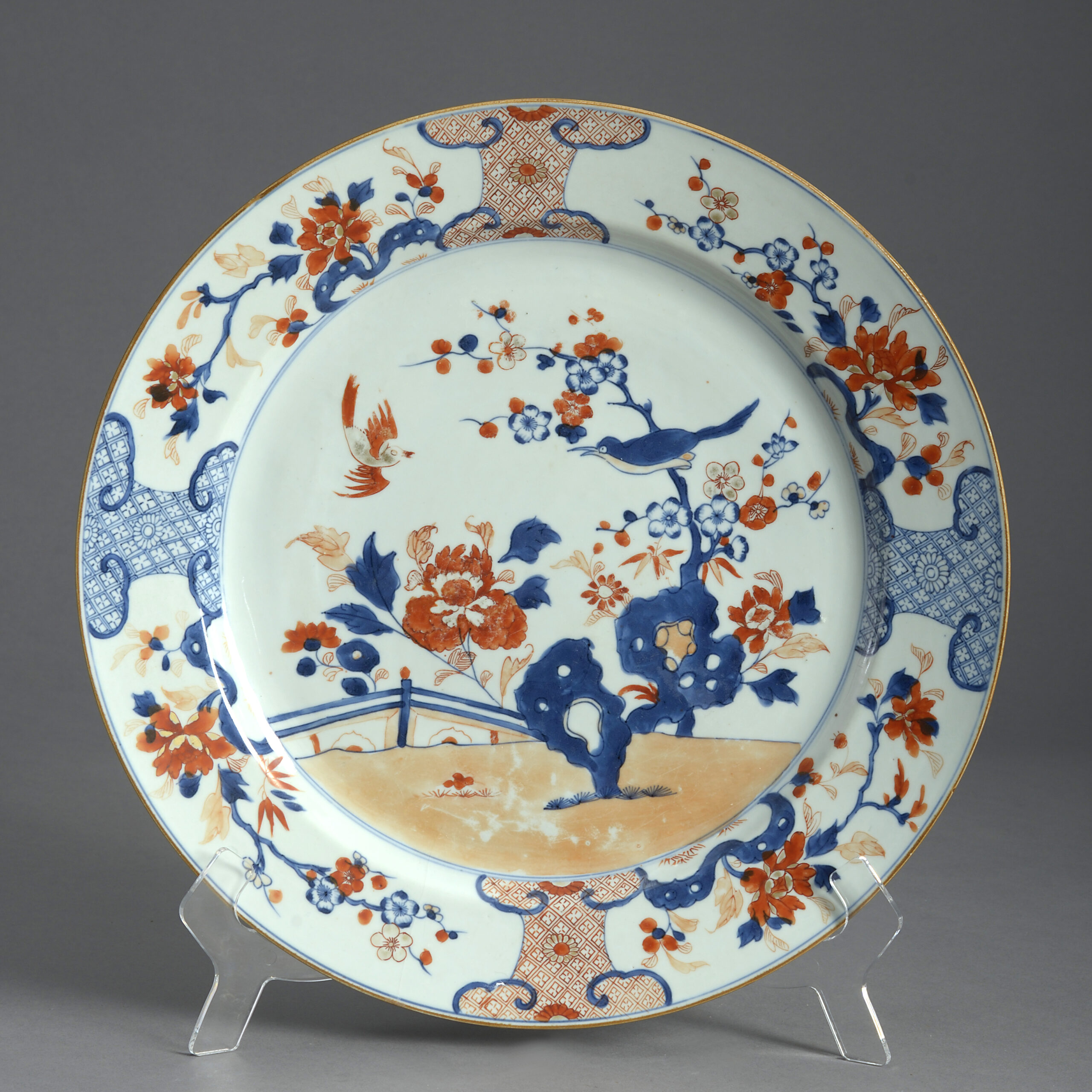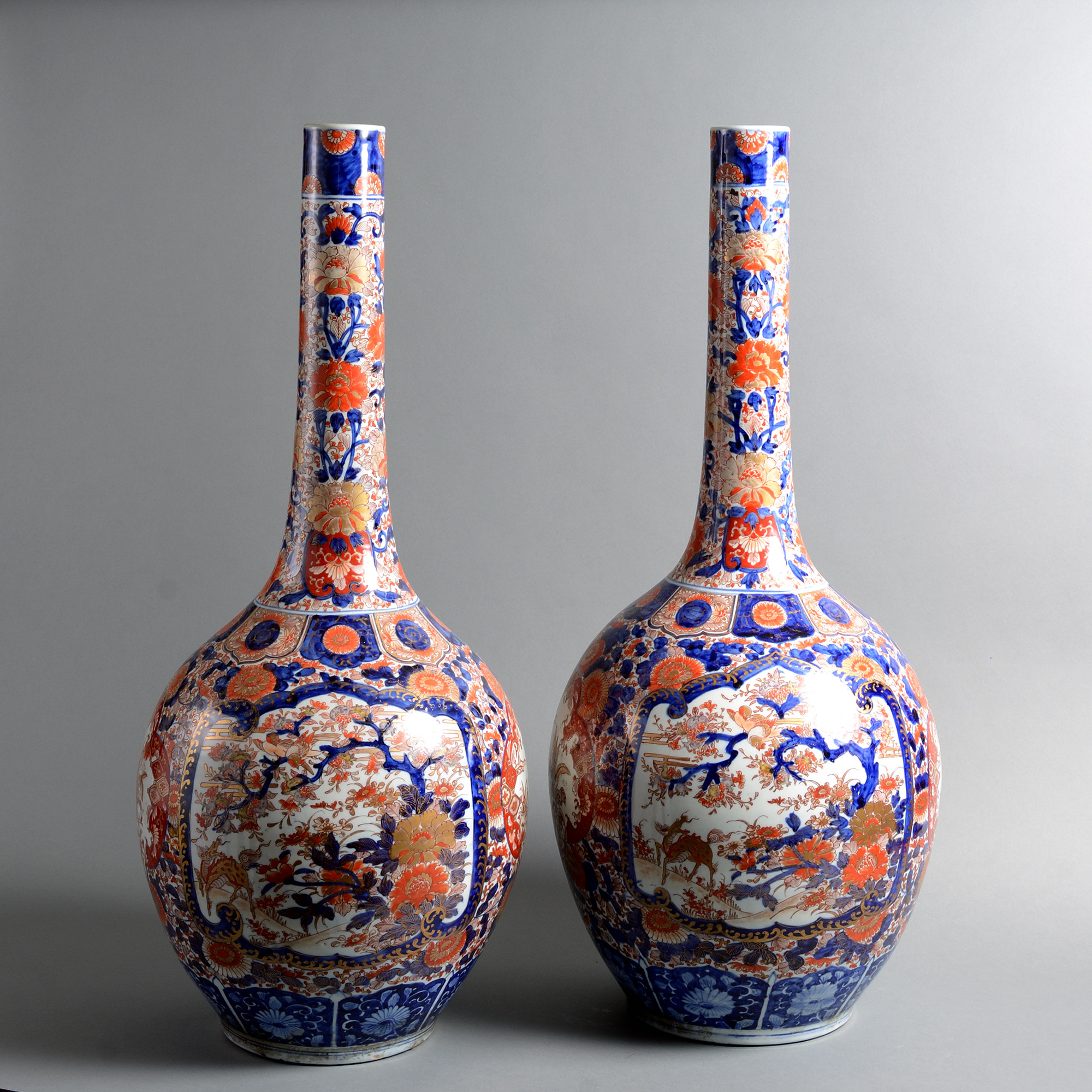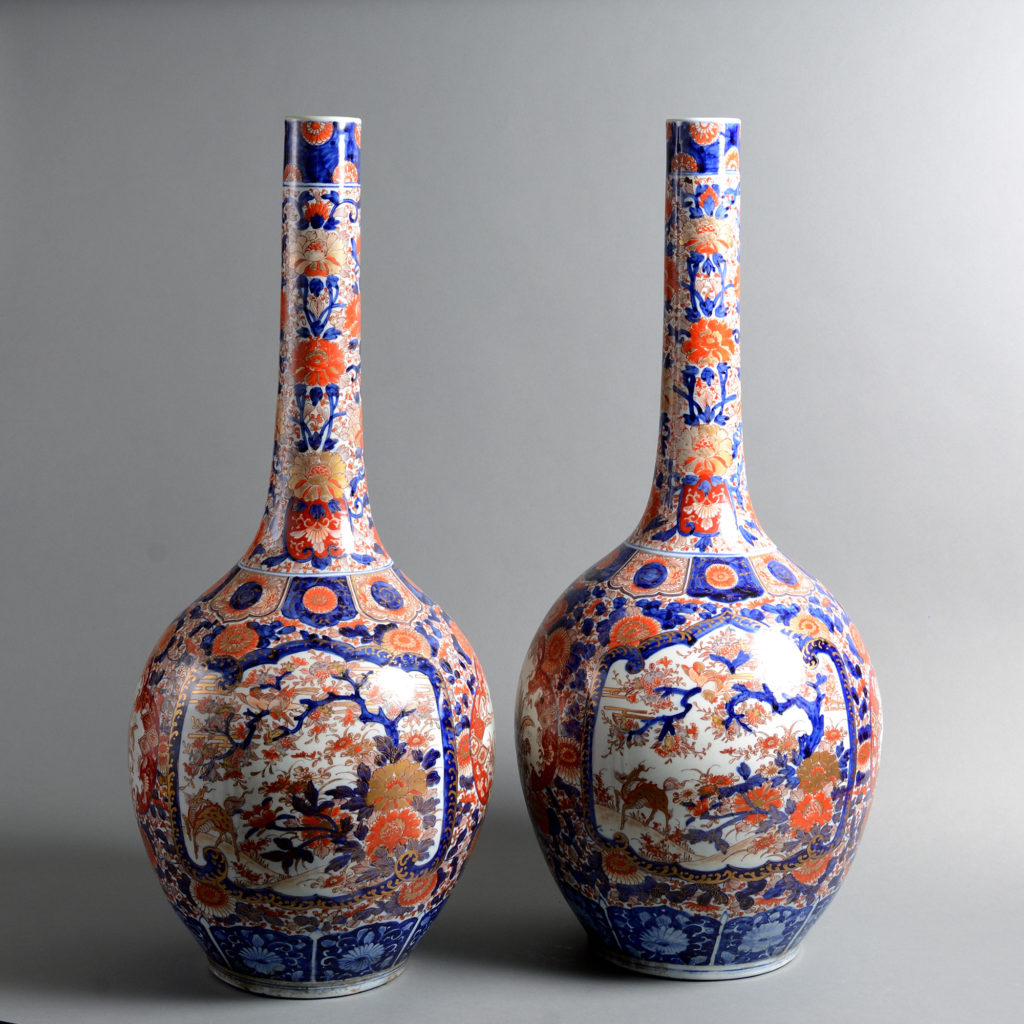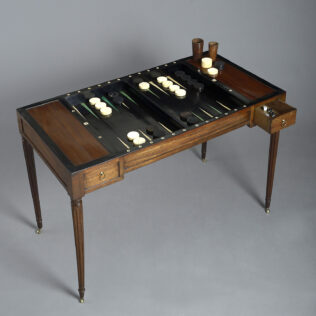The porcelain exported from the ports of Imari, now commonly referred to as ‘Imari Porcelain’ was known as ‘aka-ae’ or ‘red painting.’ It had its origins in Wucai, or ‘five colour’ porcelain – imported from China – and was first seen circa 1640.
Typically dominated by red, this style often incorporated orange, peach, gold, blue, green and black. Designs often featured a phoenix and peach within a circular panel and either a basket of flowers or prunus, bamboo and pine, referred to as ‘three friends of winter’.
This Kaolin clay-based porcelain was fired at exceptionally high temperatures resulting in strong porcelain, unlike the fragile earthenware fired at lower temperatures.
With Japan’s self-imposed isolation in the late seventeenth century exports were limited, with the country eventually trading only with the Chinese and Dutch, continuing to design porcelain specifically for export and to appeal to the Western market. Dutch traders often designed porcelain they believed would be popular in Europe and shipped it to Japan to be copied. The porcelain was both decorative and functional taking the form of tea bowls, chargers, and vases.
This early eighteenth-century Charger, made circa 1725, displays patterns typically associated with late 17th- and early 18th-century Japanese Imari porcelain. Its white ground base has been decorated with gold, blue and red, with patterns and images from nature. At 14 ½ inches across it is possible that the charger would have been functional as well decorative.

It was during Japan’s period of isolation that China resumed porcelain exports with encouragement from the Emperor Kangxi. The Chinese, adept at replicating Japanese styles, quickly established themselves as the new epicentre of porcelain export, benefitting from low-cost labour and open ports. Japanese porcelain export rapidly fell into decline as a consequence.
The period of isolation ended in 1854 when American warships forced Japan to reopen its ports to the rest of the world and by 1858 all Japanese ports were fully open again. Their exchange rates were, by now, dated, leading to a 200% loss on gold transactions, and Japanese currency was devalued. Foreigners also spread cholera, leading to hundreds of thousands of deaths across the country.
Gradually the Japanese accepted that they would have to adapt and modernise in order to compete with the West. Industrialisation was encouraged by the government who issued loans and grants.
At this time porcelain makers revived old Imari patterns. But designs which they had previously exported to Europe had been replicated by the British and Germans who were producing comparable and, arguably, better-quality examples. Imari porcelain, exported at this time, was often produced solely for decorative purposes, for example large chargers which would serve only to be displayed. Nonetheless, the quality of these pieces is still exceptionally high and, at auction, 19th century Imari, with their rich colours, continue to command high prices.
This pair of Imari bottle vases stand at 30 inches tall. Made circa 1860, they are a perfect example of porcelain being produced, once again, to be exported to the West. Their height indicates that they were intended for decorative purposes and they would have been considered exceptionally grand and exotic in a period where the West became entranced by the new treasures being exported from Japan.

The bold colours, varying scales and forms and exceptionally crafted porcelain produced in Japan from the 17th century through to the late 19th century played an important role in shaping the Western interior; its legacy is clear from the large collections still sitting in country houses in England as well as in important museum collections.




